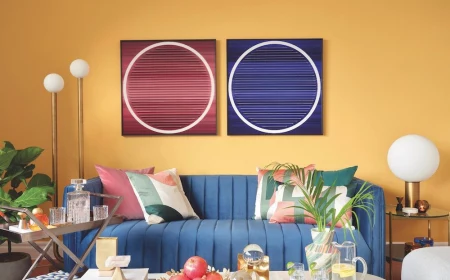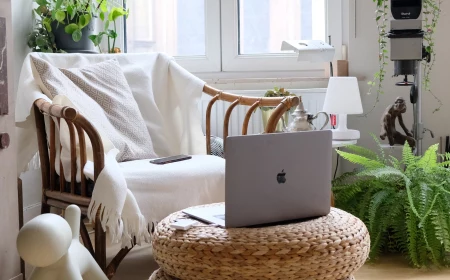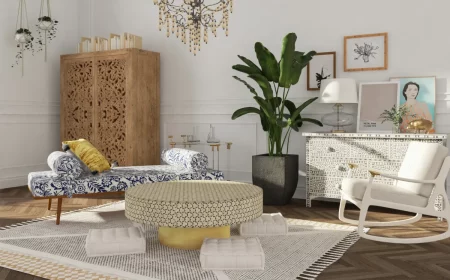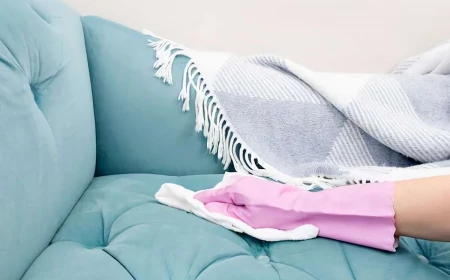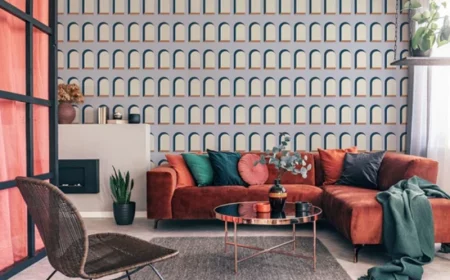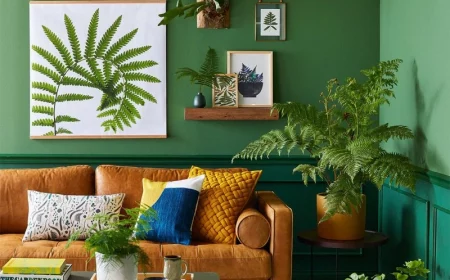Your Guide to Nailing the Mid-Century Modern Vibe (Without Making a Museum)
I’ve spent the better part of my career with my hands on furniture—literally. I can tell you the difference between oiled walnut and cheap veneer just by touch, and I know the satisfying weight of a truly well-made lounge chair. More importantly, I’ve seen the look on a person’s face when we finally find that perfect piece that just clicks and makes their whole living room sing. This style is so much more than a fleeting trend to me; it’s a whole philosophy.
In this article
So many articles just throw around words like “sleek lines” and “functional.” And sure, that’s true, but it misses the point. This design movement was born from a wave of optimism. The whole idea was to use new methods and materials to create beautiful, useful things that everyday families could actually afford and use. It was design for the people. That’s why a genuine mid-century-inspired room feels so honest, warm, and connected to the world. Let’s walk through how you can bring that exact feeling into your own home.
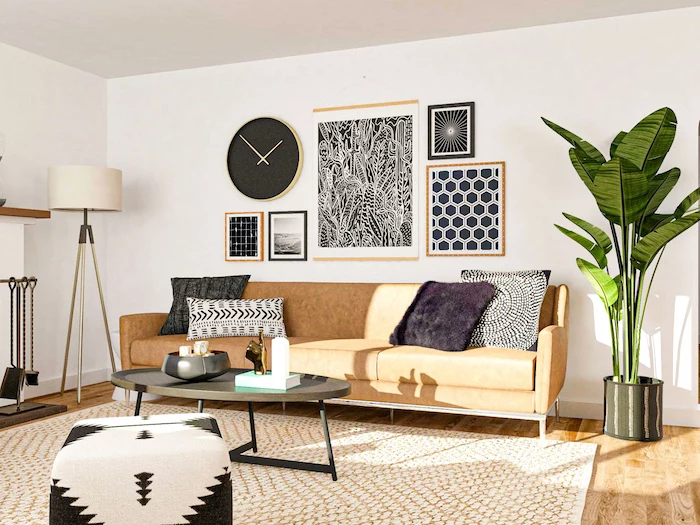
First, Get the Mindset Right
Before you even think about shopping, you have to understand the thinking behind the style. Honestly, this is the most important part. It’s not about buying a specific sofa; it’s about adopting a mindset that values simplicity and clever design. The ‘why’ is always more important than the ‘what’.
Form Follows Function… For Real
This is the golden rule. Every single curve and line should have a purpose. A chair isn’t just a pretty object; its shape is meant to hold you comfortably. Those classic tapered legs on a sideboard? They don’t just look elegant—they make the piece feel lighter in the room and, by the way, make it a heck of a lot easier to vacuum underneath. Before you pull out your wallet, ask yourself: What does this piece do? And how does its shape help it do that job better? This one question will save you from buying things that look the part but just don’t feel right.
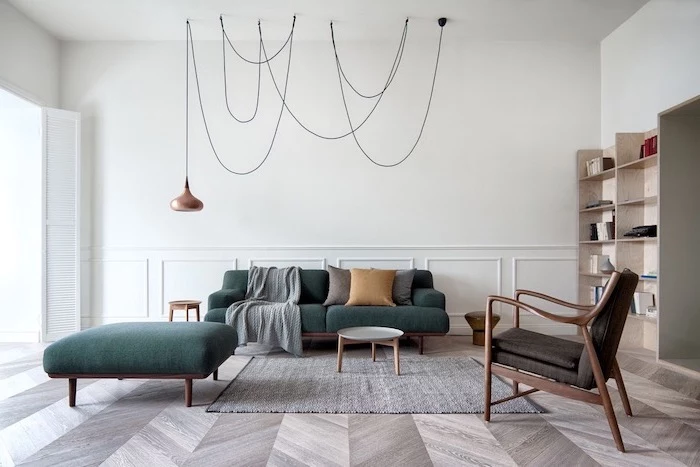
Let Materials Be Themselves
The designers from this era didn’t try to hide what things were made of. Wood was proudly wood. Metal was unapologetically metal. They even celebrated plastic for its modern versatility. They knew the natural beauty of a material was enough. You can see it in the exposed, layered edges of a molded plywood chair or the rich, deep grain of a walnut cabinet finished with oil instead of a thick, plasticky lacquer. This honesty is what makes these rooms feel so grounded and comfortable.
Bring the Outside In
Pioneering architects from the period famously used huge panes of glass and sliding doors to blur the line between the living room and the garden. You can capture this spirit even if you don’t have a wall of windows. The key is using natural materials like wood, stone, and leather. And plants! You absolutely need plants—especially sculptural ones like a fiddle-leaf fig or a snake plant. They add life and organic shape to all those clean lines.
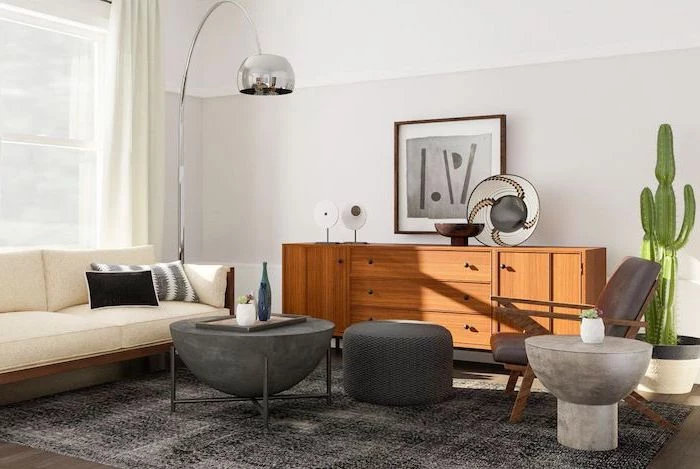
A quick tip: Keep your window treatments simple. Light, unlined linen curtains or basic blinds work way better than heavy, formal drapes. Let that natural light pour in.
Oh, and here’s a super easy win. Want to get a touch of the vibe today for under $50? Go find a cool ceramic or fiberglass-style planter and pop in a snake plant. It’s a classic combo that instantly adds that sculptural, natural element.
The Hunt for the Perfect Pieces
Putting together a room like this is more like a treasure hunt than a shopping spree. Each piece should feel chosen, not just bought. You can absolutely mix authentic vintage finds, high-quality new pieces, and even some budget-friendly items that echo the style’s principles.
How the Pros Spot Quality
When I’m digging through a vintage shop or an estate sale, I’m using my eyes and my hands. Here’s what I’m looking for:
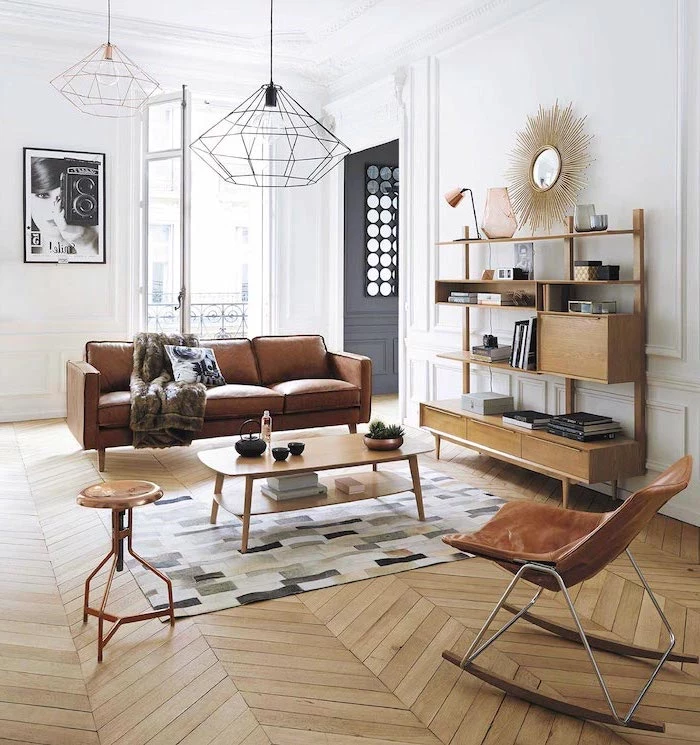
- Wood & Joints: I’m looking for solid wood or a high-quality wood veneer, usually in teak or walnut. The grain should be the star of the show. Then, I check the joints. Are the drawers put together with interlocking dovetail joints? That’s a great sign. If they’re just stapled or crudely glued, it’s a lower-quality piece.
- A Case Study in Originals: Take a classic lounge chair and ottoman set, for example. An authentic, licensed one has five legs on the chair’s base but only four on the ottoman. A lot of the cheaper copies miss this detail and use five on both. The curved wood shells should also be made of multiple thin layers of plywood—you can often count them on the edge. The feel of the leather tells a story, too; it should be soft and supple, not stiff or plasticky. Always look for a maker’s mark, but be aware that even those can be faked. Nothing beats hands-on experience.
- Upholstery Check: If a piece has its original fabric and it’s in good shape, that’s amazing. But it’s often worn out. Heads up: getting a chair professionally reupholstered can cost a few hundred dollars or more, so factor that into the price. Always peek under the cushions. A solid hardwood frame is a very good sign of quality.
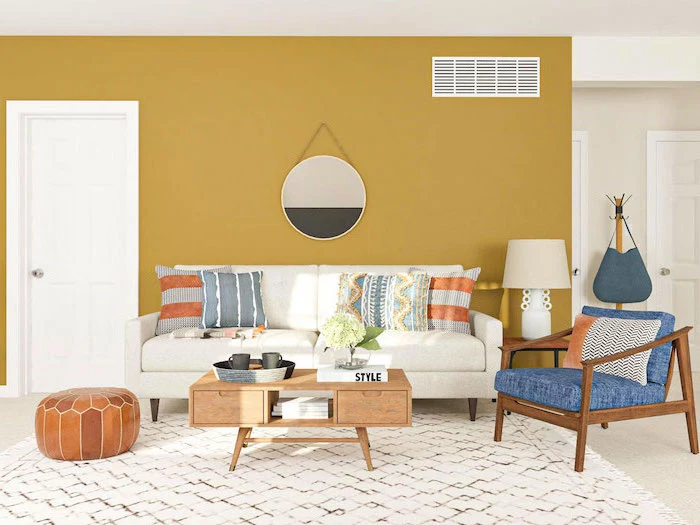
Where to Actually Find This Stuff
You’ve got a few options, each with its own pros and cons. Let’s break it down.
- High-End Vintage Dealers: Places like Chairish or 1stDibs online, or specialized local showrooms. They’ve done all the hard work of finding, authenticating, and restoring the pieces. You’re paying for their expertise and a guarantee of quality. This is the safest (and priciest) route, best for a major investment.
- Local Antique & Consignment Shops: This is where the real fun is. You can find some incredible gems if you know what to look for. I once found a stunning Danish credenza for a client, buried under a pile of lamps in a dusty corner. It needed a good cleaning and oiling, but the bones were perfect.
- Estate Sales & Auctions: The home of potential bargains, but it’s a high-risk, high-reward game. You have to inspect things carefully because all sales are final. I always give furniture a good shake—a wobbly leg might be a simple fix or a sign of a critical structural break.
By the way, what should you expect to pay? That Danish credenza I mentioned could be a steal at an estate sale for $300-$700 if it needs work. But a fully restored one from a dealer? That could easily be $1,500 to $4,000 or more. Online marketplaces will land you somewhere in the middle.
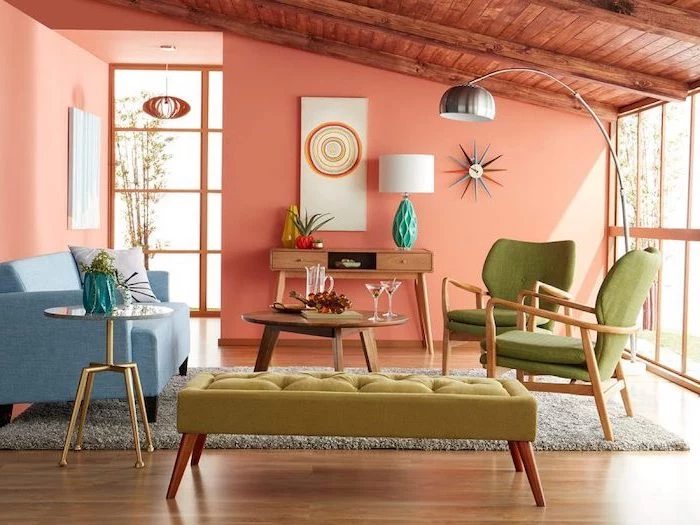
A Word on New vs. Vintage
Let’s be real: not everyone can or wants to drop $7,000 on an original armchair. So what’s the difference between all the new options out there?
Think of it in three tiers. At the top, you have licensed reproductions from brands that have the official rights to produce the designs. They’re made to the original specs with high-quality materials, but they’re still pricey. Below that, you have inspired-by or look-alike pieces from brands like Article or Joybird. These are a great middle ground—they capture the spirit and aesthetic with good quality for the price, but they aren’t exact replicas. At the bottom are the cheap knock-offs. To be frank, you should avoid these. The proportions are usually off, the materials are shoddy, and they just don’t last. I’d much rather see someone buy a simple, well-made new sofa that feels right than a bad copy of a famous one.
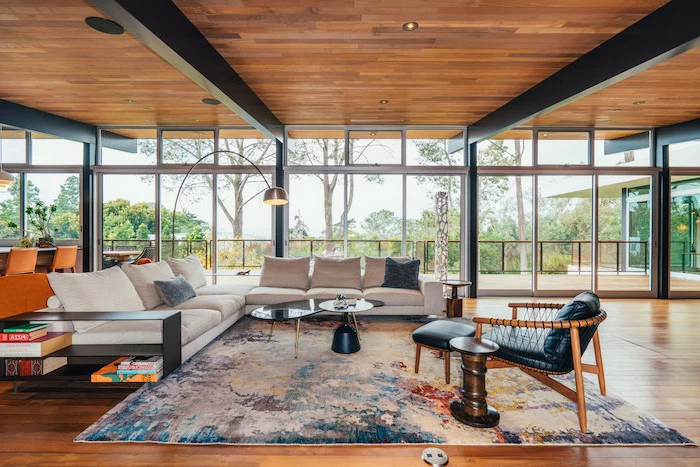
Putting the Room Together
A mid-century living room should feel open and uncluttered. The furniture is the star, so you don’t need a lot of extra stuff. The goal is to arrange things in a way that’s both beautiful and easy to live in.
If you have a limited budget and can only spring for one big-ticket item, make it the credenza. It’s a workhorse piece that anchors the room, provides tons of storage, and makes a huge statement.
The Main Players
- The Sofa: Start here. Look for a low-profile sofa with clean lines, tight (not overstuffed) cushions, and visible legs. Those legs are key—lifting the sofa off the floor makes the entire room feel bigger.
- The Credenza: This long, low cabinet is a signature piece. It’s perfect as a media console or just for general storage. Look for one with beautiful wood grain or cool details like sculpted handles.
- Armchairs: Here’s your chance to add some personality! A single, sculptural statement chair with an enveloping shape can be the art piece in the room. Don’t be shy about mixing a leather chair with a fabric sofa.
- Tables: Think about organic, curved shapes for a coffee table or the clean geometry of nesting end tables. A cluster of smaller, movable tables is often more practical than one huge one.
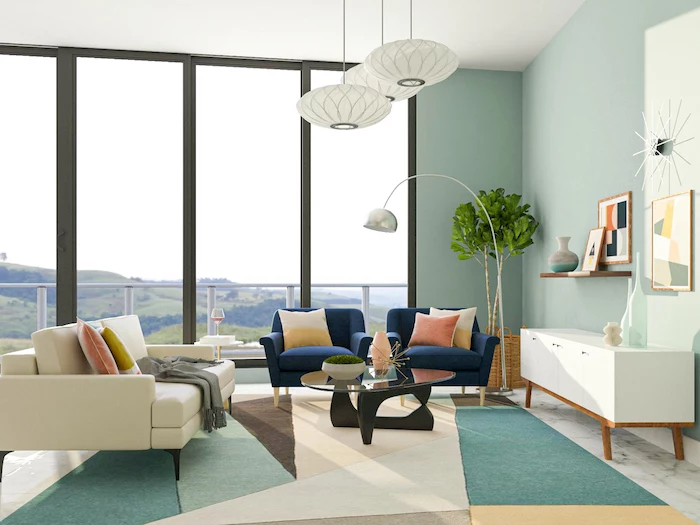
Layout and Flow
Open-concept living was a big deal, so use your furniture to create distinct zones. A large area rug is perfect for anchoring your main seating area. Arrange the sofa and chairs to encourage conversation—people shouldn’t have to shout across the room. And most importantly, make sure you have clear paths to walk. As a rule of thumb, try to leave at least 30 to 36 inches for major walkways to keep that open, uncluttered feeling.
The Finishing Touches: Color, Texture, and Light
Once the big pieces are in, these are the details that bring it all to life.
A Sophisticated Color Palette
People immediately think of avocado green and bright orange. And while those were used, it was often in small, powerful doses. A more timeless approach is to start with a neutral foundation of warm whites, grays, and earthy tones. Then, punch it up with color in a few strategic spots—a teal armchair, a bold piece of abstract art, or even a deep navy accent wall behind the sofa.
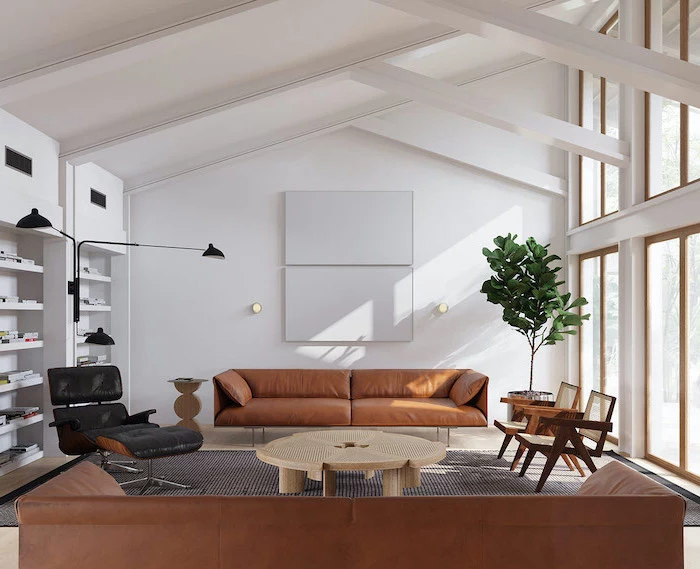
Texture Brings the Warmth
With so many clean lines and smooth surfaces, texture is what keeps the room from feeling like a cold office. Think nubby bouclé or tweed fabrics, a shaggy wool rug, or the smooth patina of worn-in leather. Mixing these textures adds a layer of depth and makes the space so much more inviting.
Lighting is Functional Sculpture
Lamps aren’t just for seeing; they’re sculptural objects in their own right. I tell my clients to think in three layers:
- Ambient Light: Your overall room lighting. This could be a floating bubble lamp or a spidery, multi-armed chandelier that makes a statement.
- Task Light: Focused light for reading or working. A dramatic arc floor lamp that sweeps over a reading chair is a classic for a reason.
- Accent Light: A small spotlight aimed at a great painting or a beautiful plant. This adds drama and sophistication.
And now for a critical safety warning: I cannot say this enough. If you buy a vintage lamp, YOU MUST GET IT REWIRED. I once saw a client plug in a gorgeous old floor lamp, and the brittle, ancient wiring immediately shorted out in a shower of sparks. He got lucky. Old wiring is a serious fire hazard. Expect a certified electrician to charge around $50-$100 for this service—a tiny price to pay for peace of mind.
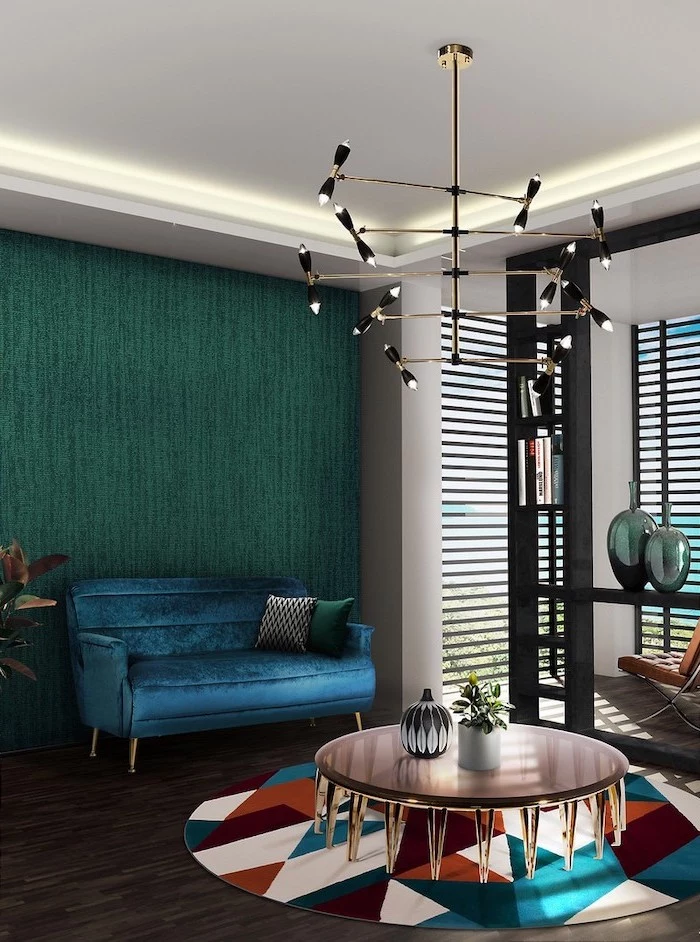
Caring for Your Treasures
These pieces were built to last, but they need a little love to stay beautiful.
How to Care for Wood
Many classic pieces have an oiled finish, which needs attention. To keep the wood from drying out, you should re-oil it once or twice a year. Here’s a quick how-to:
- Get your supplies: You’ll need some teak or walnut oil (match it to your wood), a pad of super-fine #0000 steel wool, and a few soft, lint-free cloths.
- To apply: Put a small amount of oil on the steel wool and rub it gently onto the surface, always going with the grain of the wood. The steel wool cleans off any grime without scratching. Let it sit for about 15 minutes, then use a soft cloth to wipe off all the excess oil. Let it dry, and you’re done!
Know When to Call a Pro
Be honest about your DIY skills. A loose leg can probably be fixed with wood glue and a clamp. But a broken joint or a big chip in the veneer? That’s a job for a professional furniture restorer. A bad repair can tank the value of a piece. The same goes for upholstery—leave it to someone who knows how to handle vintage frames.
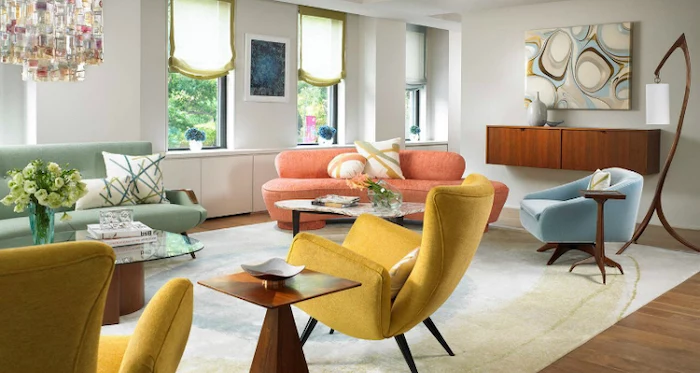
Common Mistakes to Sidestep
I see the same few slip-ups time and time again. Here’s how to avoid them:
- The ‘Time Capsule’ Effect: Your goal isn’t to perfectly recreate a room from a TV show. The most interesting spaces mix in personal items, modern tech, and maybe even a piece from a totally different style. Let the room reflect you.
- Ignoring Scale: This furniture is often lower and smaller than bulky modern pieces. A low-profile sofa can look comically tiny in a giant room with soaring ceilings. Measure your space and your furniture to make sure they work together.
- Forgetting the Greenery: I mentioned it before, but it’s worth saying again. Plants are non-negotiable! They add color, life, and that essential connection to the natural world.
Ultimately, creating a mid-century modern living room is an incredibly rewarding journey. It’s about being thoughtful and choosing pieces with integrity and a story. Take your time, enjoy the process, and you’ll end up with a space that feels both timeless and completely, uniquely yours.
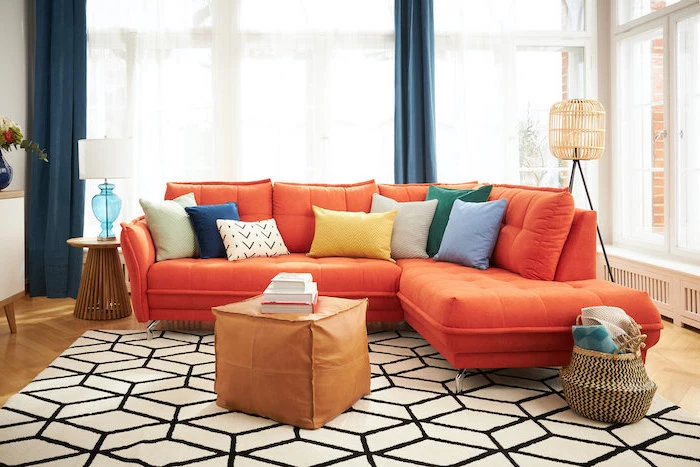
Inspirational Gallery
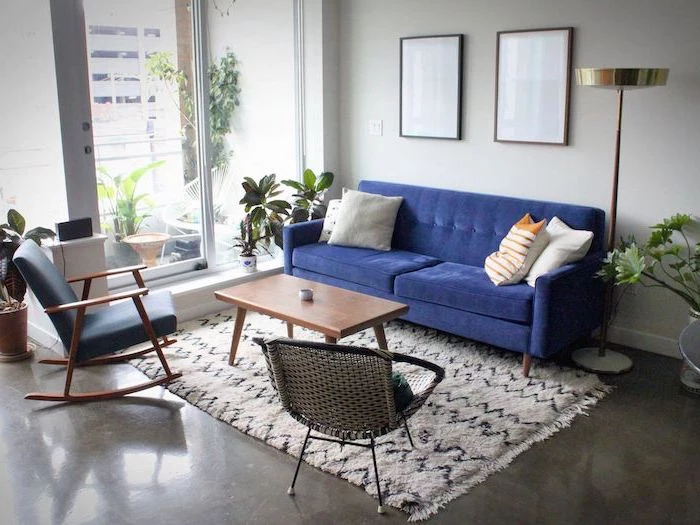
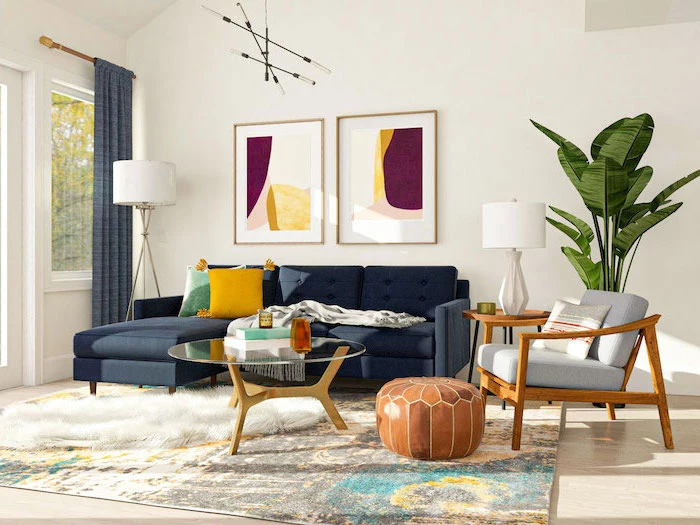
“The details are not the details. They make the design.” – Charles Eames
This philosophy is the soul of Mid-Century Modern. It’s seen in the elegant dovetail joints of a credenza, the gentle curve of a chair back, or the perfect taper of a table leg. When you’re choosing pieces, look for these thoughtful details. They are the quiet signatures of quality and intentional design.
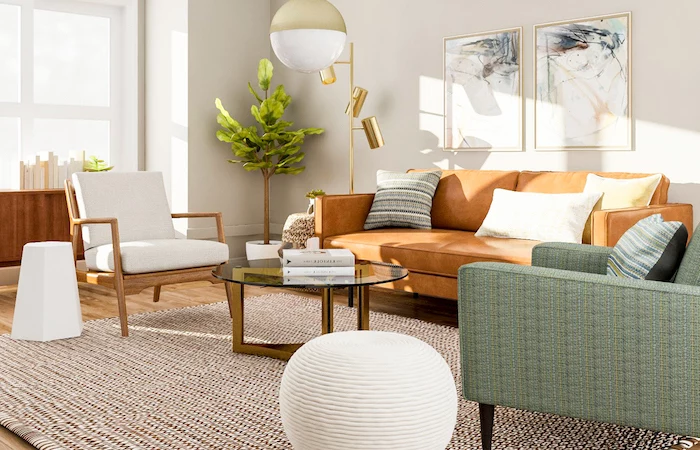
Beyond the expected walnut and teak, the Mid-Century color palette is a vibrant celebration of nature and optimism. Think of the deep, moody teals and olive greens of the era, the playful confidence of mustard yellow and burnt orange, or the calming effect of a dusty powder blue. Use these as accent colors on a feature wall, a velvet armchair, or through textiles to bring an authentic, layered feel to your space.
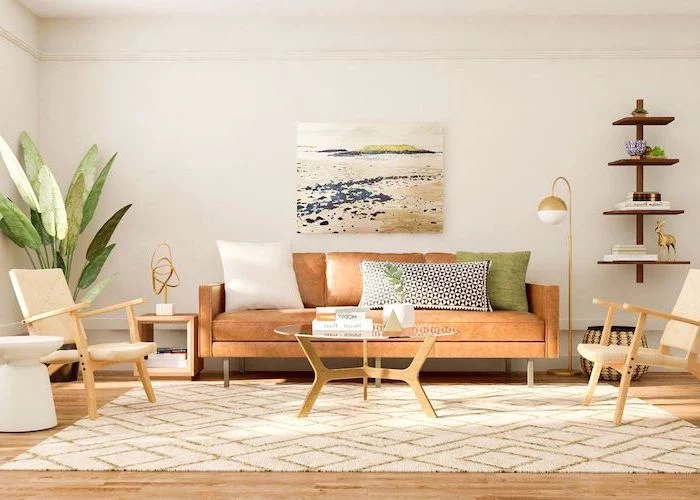
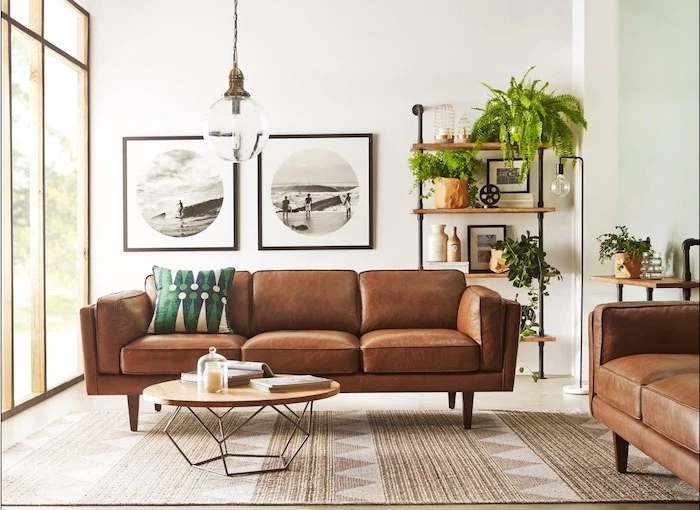
How do I mix different wood tones without it looking chaotic?
The key is to choose a dominant wood tone for your main, large pieces—like a sideboard or dining table—and use contrasting woods as accents. For instance, pair a walnut credenza with lighter oak-framed dining chairs. Maintain consistency in the finish (e.g., all matte or oiled finishes, not a mix of glossy and rustic) to create a cohesive, intentionally curated look rather than a random collection.
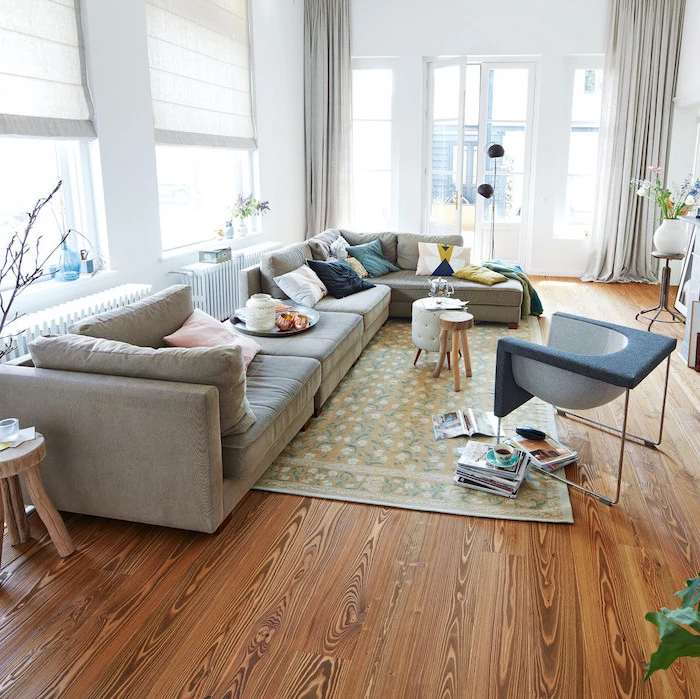
- Creates visual lightness, making rooms feel larger.
- Draws the eye horizontally, emphasizing length and space.
- Fosters a more intimate, relaxed atmosphere for conversation.
The secret? Low-slung furniture. From sofas that sit closer to the ground to low-profile coffee tables, this signature silhouette was designed to complement the open-plan layouts of modern architecture, ensuring sightlines remained clear and uncluttered.
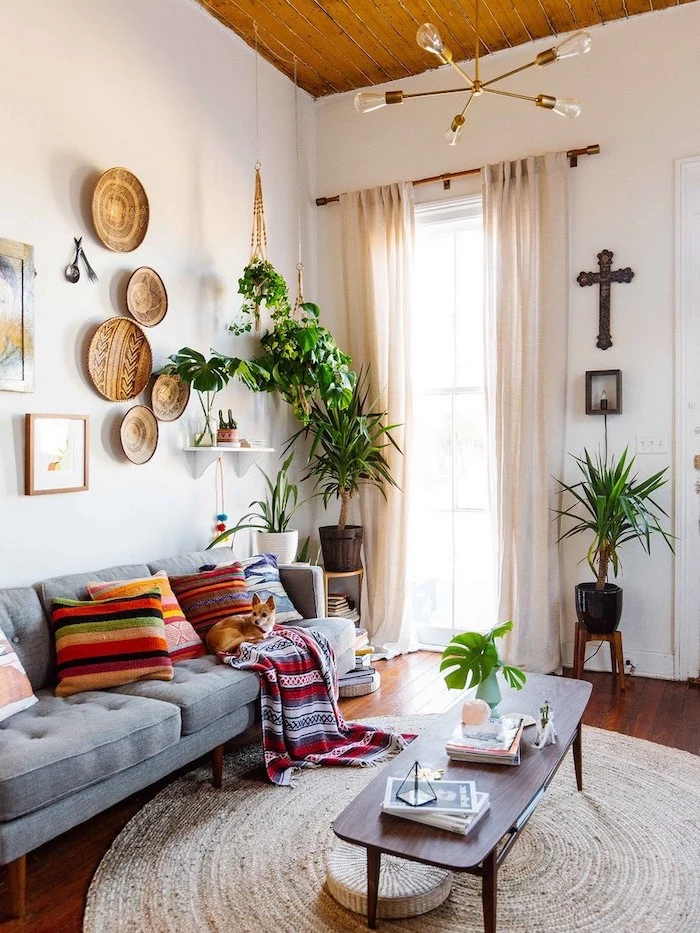
Vintage Original: Carries a genuine history and patina. Often made with old-growth woods and construction techniques that are rare today. You’re investing in a piece of design history, but it may show signs of wear and require restoration.
Modern Reproduction: Offers a pristine look with modern manufacturing consistency, often at a lower price point from brands like Article or West Elm. Great for high-traffic use, but may lack the unique character and material depth of a vintage find.
The best rooms often mix both for character and practicality.
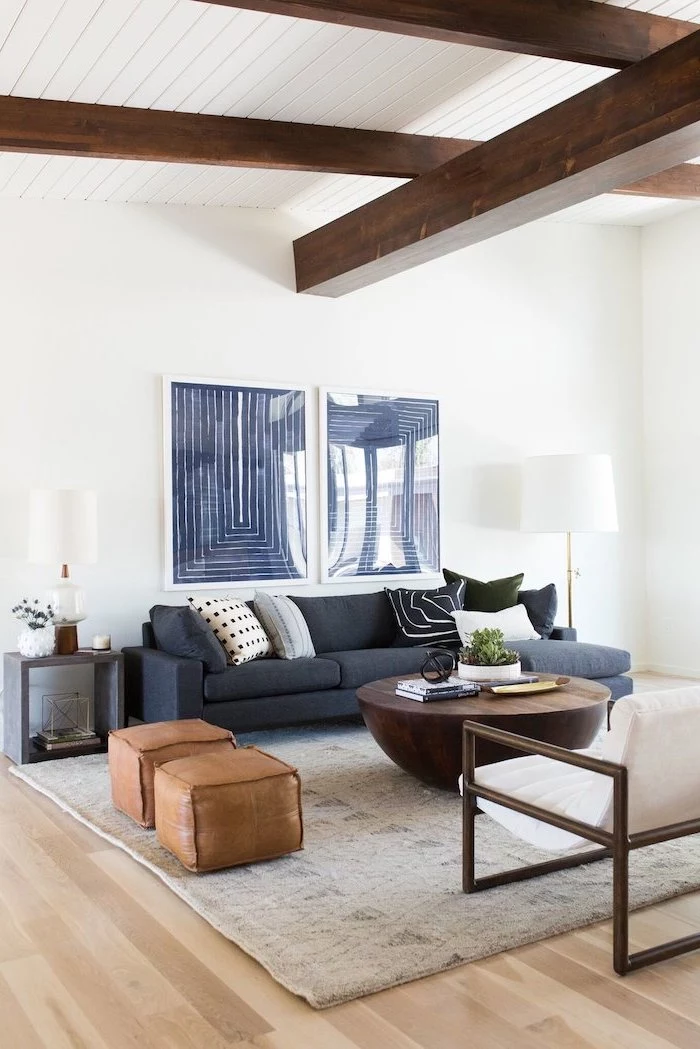
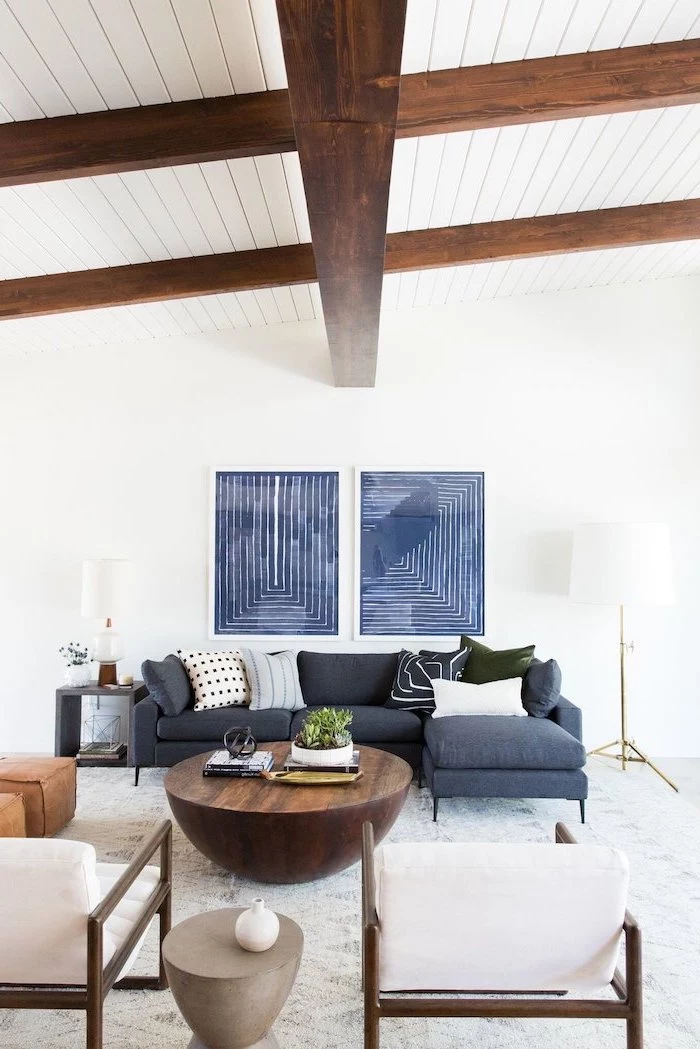
Lighting in a Mid-Century home is sculptural. It’s not just about illumination; it’s about creating focal points. Think beyond a single ceiling fixture and layer your light sources:
- Statement Pendant: A sputnik chandelier or a George Nelson saucer bubble lamp over a dining table sets the tone immediately.
- Architectural Floor Lamp: An arc lamp, like the iconic Arco by Flos, can provide overhead light in a space without ceiling wiring, while also being a stunning object.
- Task & Accent Lighting: Ceramic-based table lamps on sideboards and end tables create warm, inviting pools of light.
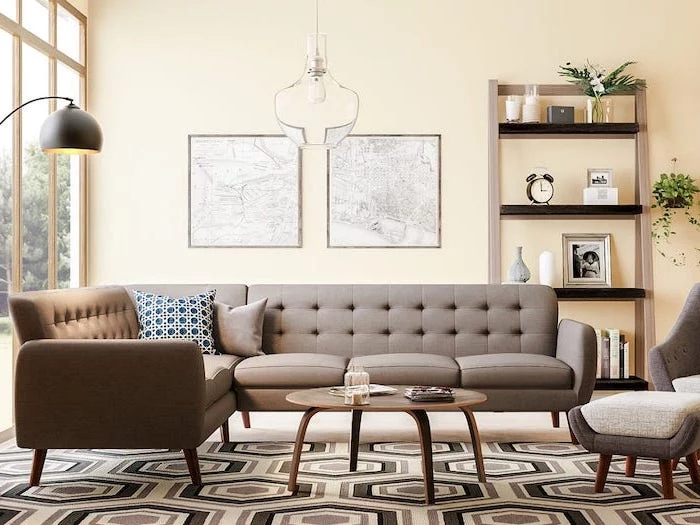
Don’t forget the greenery: Houseplants were integral to the MCM aesthetic, blurring the line between indoors and outdoors. The dramatic, sculptural leaves of a Fiddle Leaf Fig, the quirky geometry of a Snake Plant, or the elegant fronds of a Kentia Palm are perfect living accessories. Place them in simple, ceramic cylinder pots to complete the look.
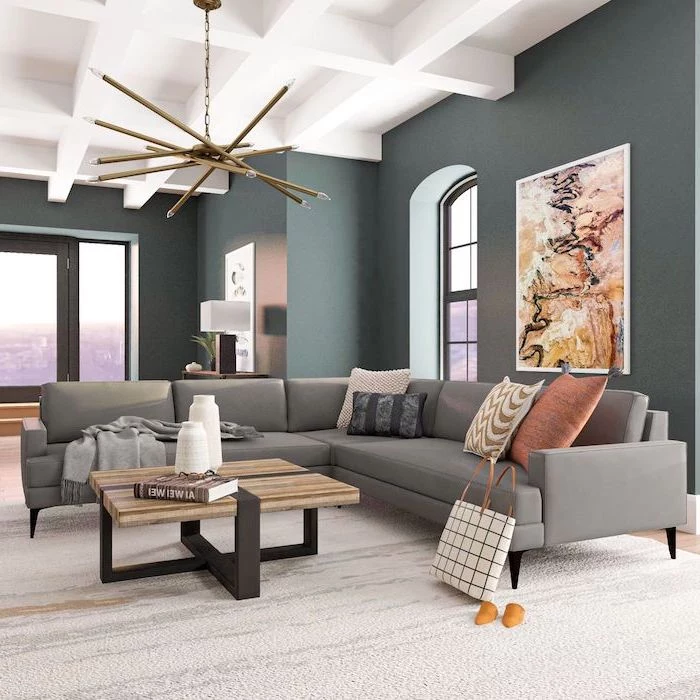
Between 1945 and 1966, the Case Study House program commissioned major architects like Richard Neutra and the Eameses to design and build inexpensive and efficient model homes, becoming blueprints for the modern American residence.
This spirit of accessible, beautiful architecture is why the furniture feels so at home in spaces with large windows and a strong connection to the outdoors. You don’t need a Case Study house to get the vibe—just prioritize natural light and keep window treatments minimal to honor the original intent.
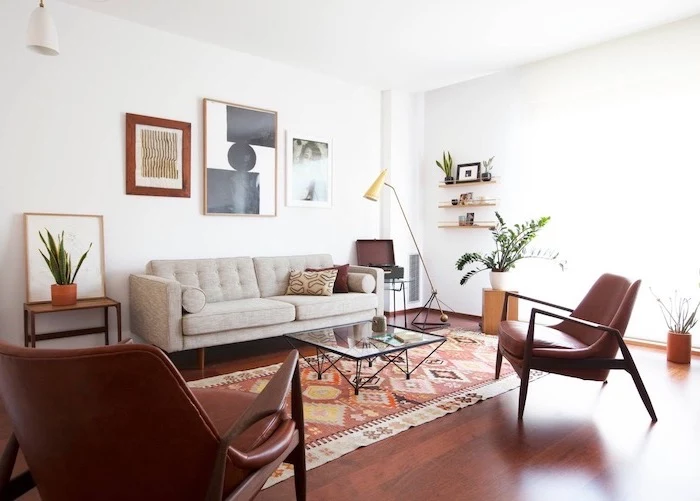

That quintessential sleek sideboard or credenza is more than just a pretty face. It’s the undisputed workhorse of the Mid-Century living or dining room. Its purpose is to provide elegant, concealed storage, reducing clutter to preserve the clean lines of the space. Use it to hide away everything from table linens and board games to your vinyl collection, keeping the top surface free for a stylish lamp, a ceramic vase, and maybe one or two cherished objects.

The wrong art can instantly disrupt an MCM scheme. Steer clear of ornate, traditional paintings. Instead, opt for pieces that complement the era’s aesthetic:
- Abstract Expressionism: Bold, colorful canvases with gestural brushstrokes.
- Geometric Prints: Think clean lines, simple shapes, and color blocking, reminiscent of Josef Albers’ work.
- Minimalist Photography: Black and white architectural or nature shots add sophistication without overwhelming the space.
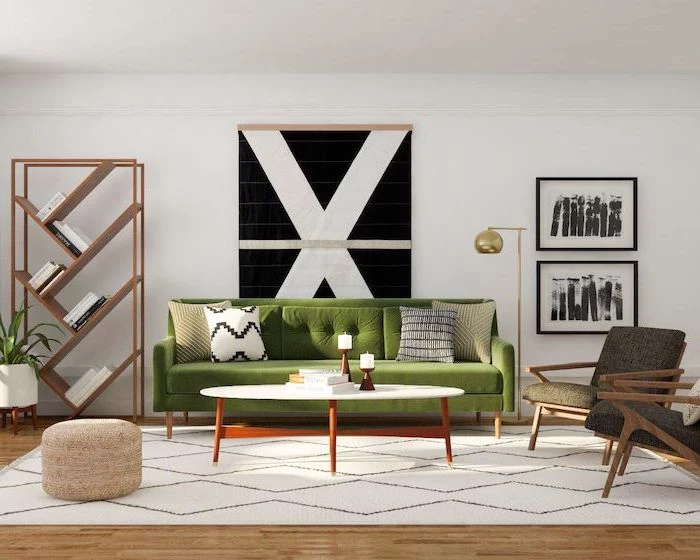
Is it a sin to paint vintage MCM wood furniture?
For purists, yes. If you have a signed piece by a known designer or a piece made of valuable teak or rosewood, painting it would destroy its historical and monetary value. However, if you find a mass-produced, veneer-damaged, or less significant piece, a careful coat of a period-appropriate color (like deep teal or pumpkin orange) can be a fantastic way to salvage it and make a bold personal statement.
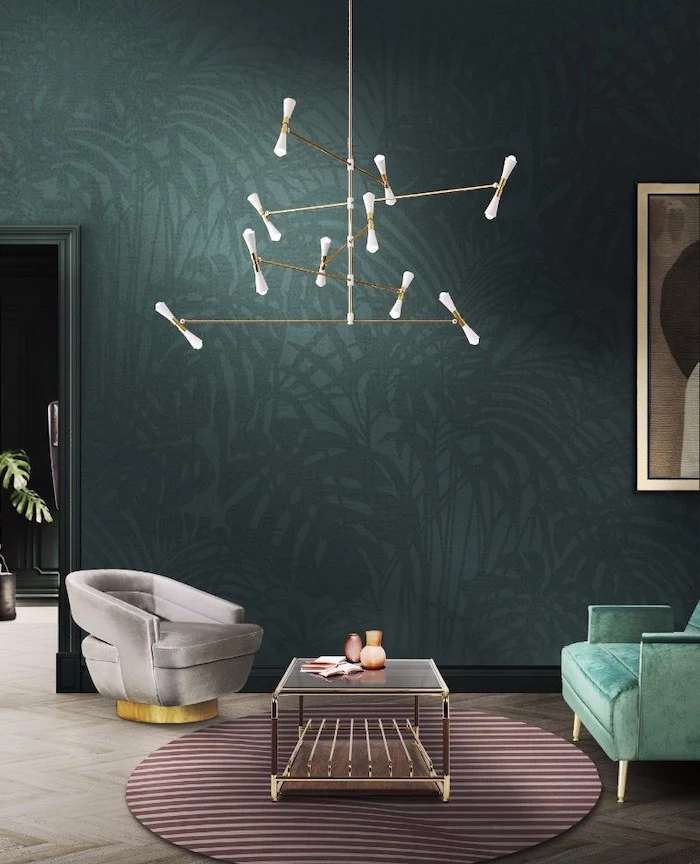
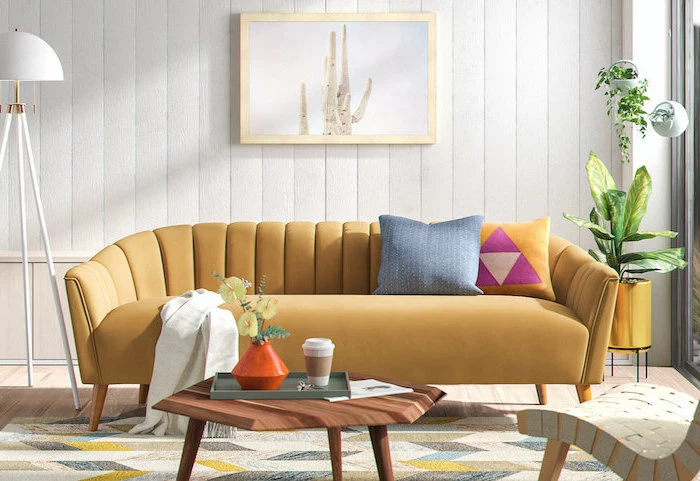
A common pitfall: Filling every square inch of the room. Mid-Century design thrives on negative space. The area around your furniture is just as important as the furniture itself. Allow your key pieces to breathe. This lets their sculptural forms stand out and creates a sense of calm and order, preventing the room from feeling like a cluttered vintage store.
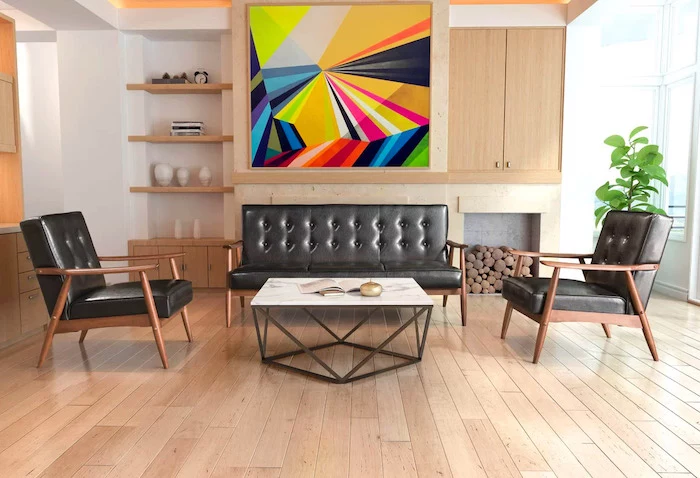
While American design often focused on plastics and bent plywood, Brazilian Mid-Century Modernism, led by figures like Sergio Rodrigues, embraced rich, dark, tropical hardwoods and supple leather. The forms are often more curvaceous, robust, and organic. Introducing a single ‘Mole’ armchair or a piece made of jacaranda wood can add an unexpected, worldly, and incredibly comfortable layer to your decor.
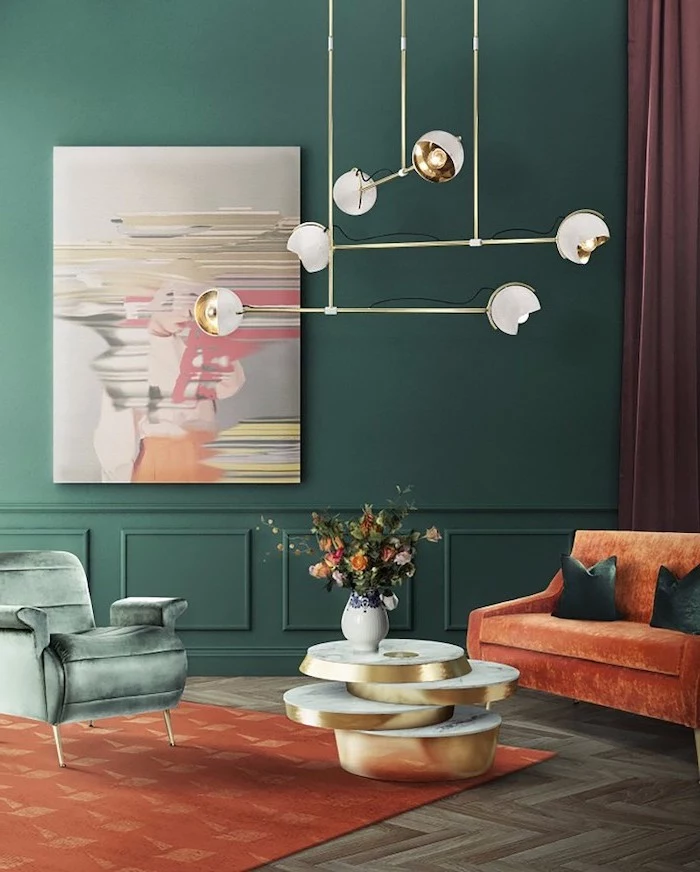
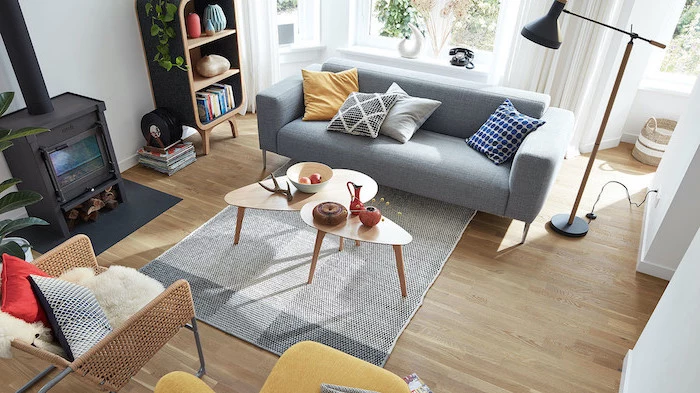
The iconic boucle fabric, with its nubby, looped texture, was popularized by Florence Knoll in the 1940s after she commissioned Eero Saarinen to design a chair she could “really curl up in.”
That chair was the Womb Chair. Today, boucle is back in a big way. Its soft, cozy texture provides the perfect counterpoint to the hard, smooth surfaces of wood and metal, adding instant warmth and tactile comfort to a sofa or armchair.
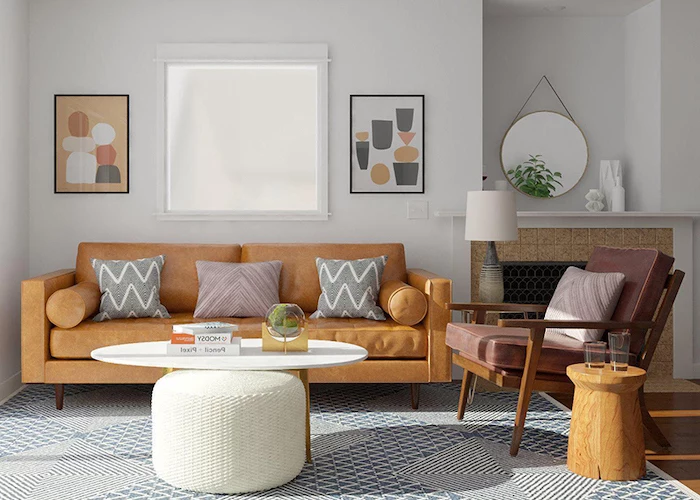
Looking for authentic vintage? Check for these clues:
- Weight: Real solid wood and old plywood are heavier than modern particleboard.
- Joinery: Look for dovetail joints in drawers, not just staples or glue.
- Labels & Markings: Check underneath or inside drawers for maker’s marks from brands like Knoll, Lane, or Drexel.
- Patina: Look for a gentle, even aging of the finish, not a perfect, factory-fresh shine.
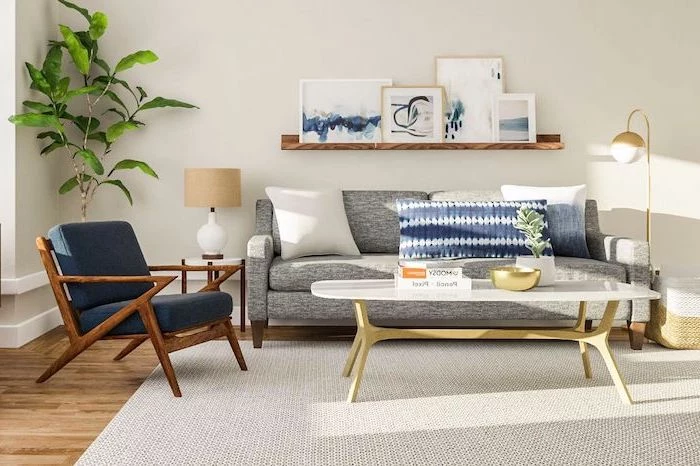
The current ‘Japandi’ trend is a natural evolution of Mid-Century principles. It blends the sleek lines and warm woods of Scandinavian MCM with the Japanese wabi-sabi philosophy of finding beauty in imperfection and nature. It shares a core focus on craftsmanship, simplicity, and natural materials, but with a more muted, serene color palette and an even greater emphasis on minimalism and tranquility.
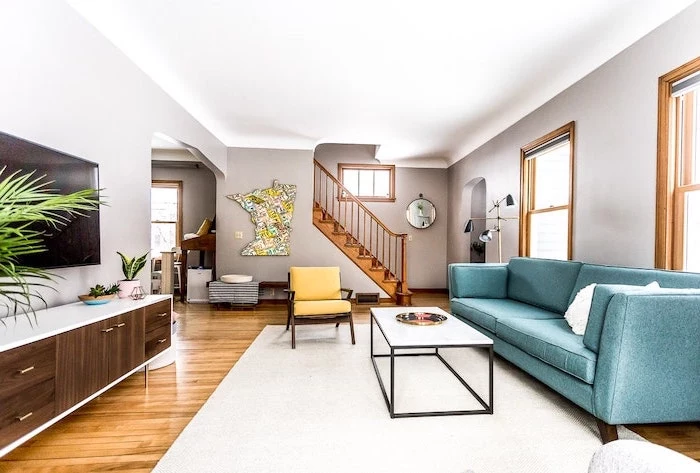
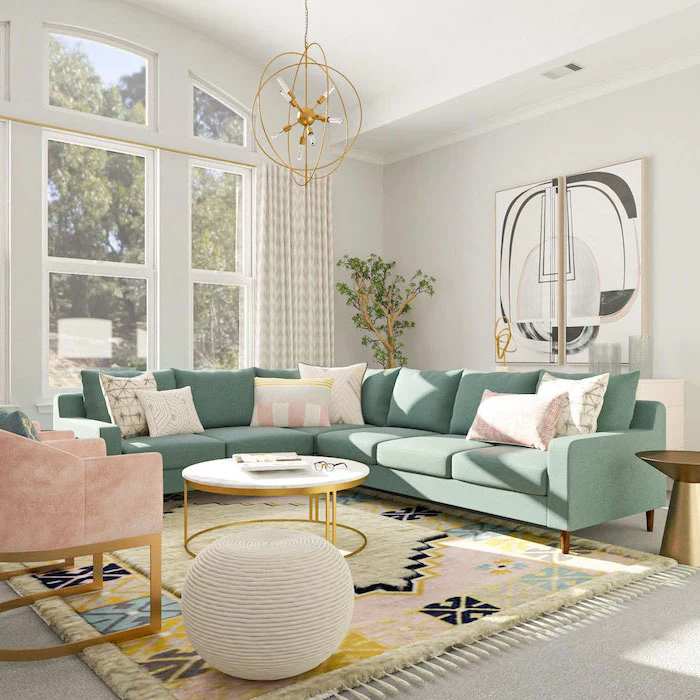
Walnut: The star of American MCM. Known for its rich, dark chocolate color, often with complex grain patterns. It provides a sense of warmth, depth, and sophistication. Perfect for large, statement pieces like credenzas and dining tables.
Teak: The champion of Danish Modern. Naturally rich in oils, making it incredibly durable and water-resistant. Its color is typically a warmer, honey-toned brown that can develop a beautiful silver-gray patina over time if left untreated.
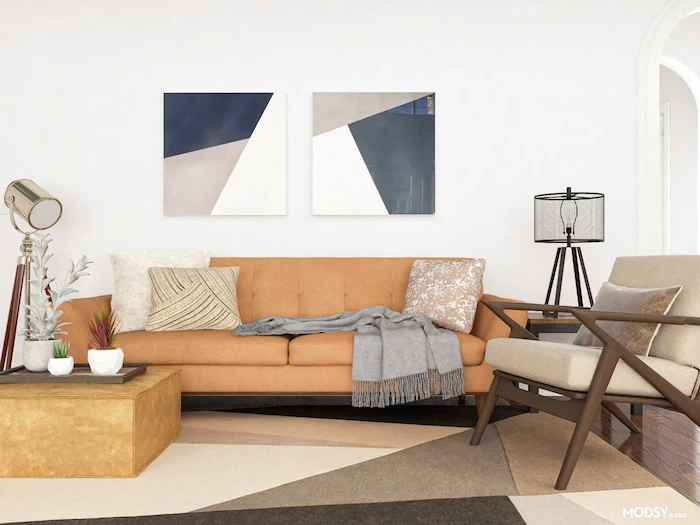
Texture is the secret ingredient that keeps an MCM room from feeling flat or cold. It’s the interplay between different surfaces that creates interest and comfort. Imagine the cool smoothness of a leather sofa, the soft coarseness of a wool area rug, the nubby feel of a boucle pillow, the slickness of a glass tabletop, and the organic grain of an oiled walnut cabinet. Actively layering these different tactile sensations is what makes the space truly inviting.
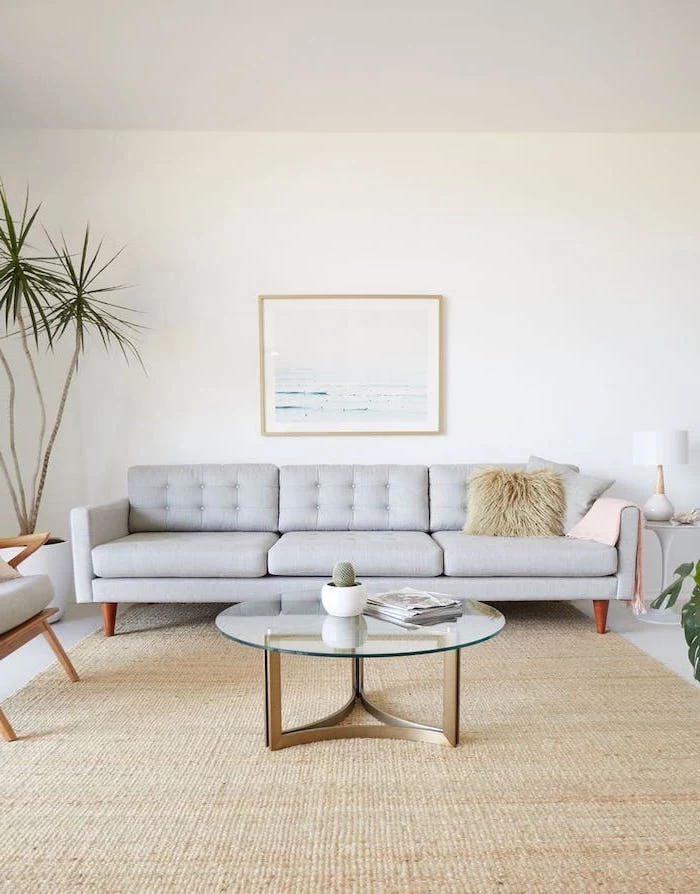
- A warm, inviting glow.
- A more authentic, hand-rubbed appearance.
- Enhanced wood grain and depth of color.
The secret? An oiled finish. Many high-quality MCM pieces, especially Danish ones, were finished with oil, not a hard polyurethane varnish. To maintain them, skip the commercial polishes. Simply wipe with a soft cloth, and periodically (once or twice a year), re-apply a quality teak or tung oil to nourish the wood and restore its luster.
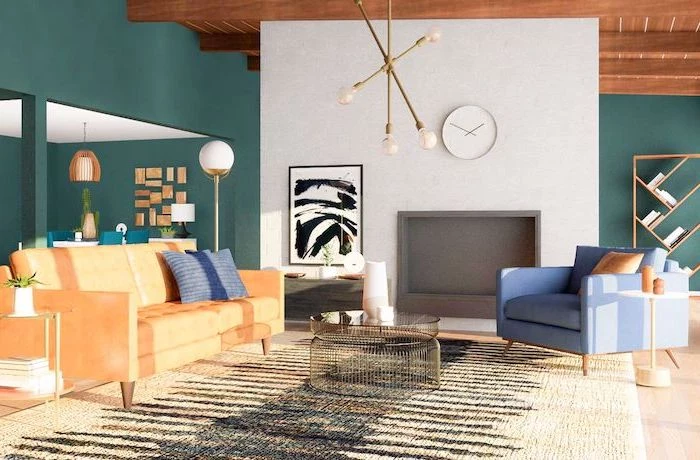
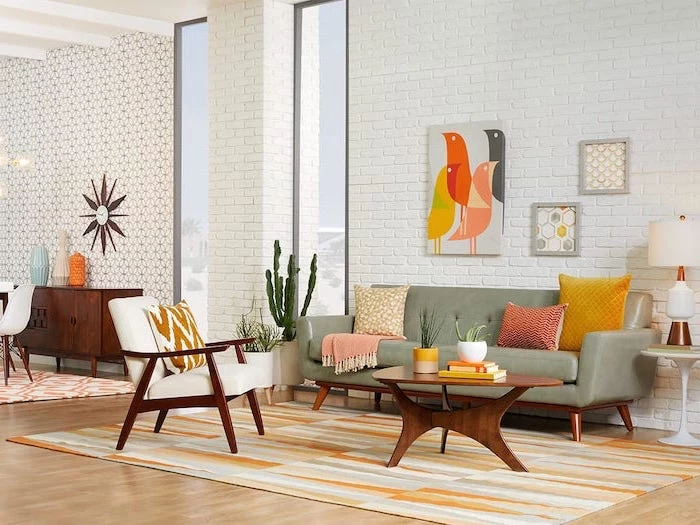
A critical mistake: Getting the scale wrong. Mid-Century furniture is often visually light and low-profile. A classic low-backed sofa can look lost in a room with soaring ceilings and massive windows. To counteract this, use vertical elements to draw the eye upward—a tall arc lamp, floor-to-ceiling curtains, or a large piece of vertical wall art can help balance the proportions and connect the furniture to the larger space.
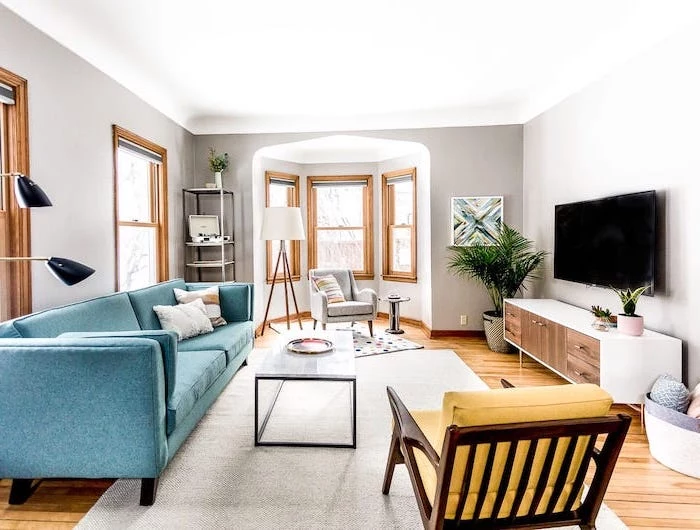
Want to introduce the vibe without a total overhaul? Start small.
- Swap out hardware on existing cabinets for simple brass or matte black pulls.
- Add a single table lamp with a ceramic base and a simple drum shade.
- Buy a set of cushions for your current sofa in a classic MCM geometric print from a maker like Maharam or a similar style from CB2.
- Hang one bold, abstract print.
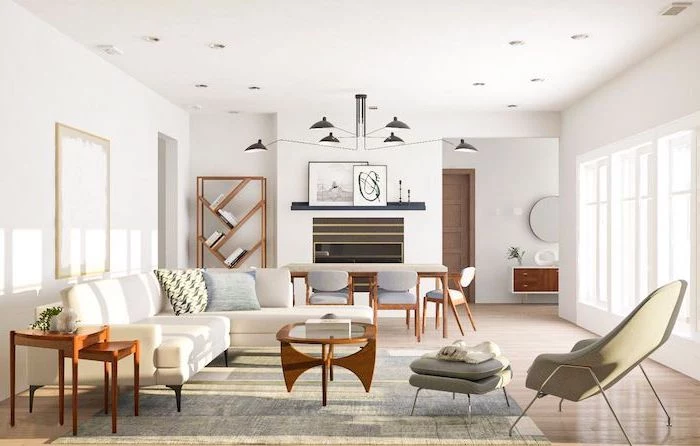
The Eames Lounge Chair and Ottoman, introduced in 1956, uses a revolutionary process of heat-and-pressure-molding plywood into complex curves, something previously considered impossible.
This technological leap, which Charles and Ray Eames perfected for years, is a perfect example of the era’s optimism and drive to use new industrial methods to create unprecedented comfort and beauty. It wasn’t just about a new shape; it was about inventing a new way to build.

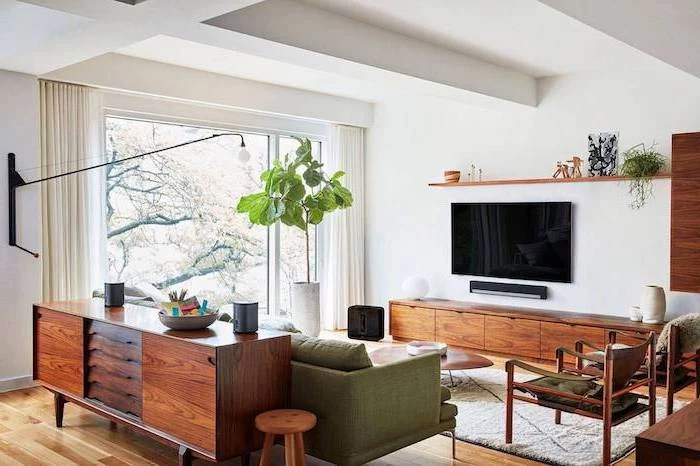
The key to avoiding the dreaded ‘museum’ or ‘movie set’ look is to inject your own personality. The original movement was about real life, not untouchable displays. So mix it up!
- Place your grandmother’s antique vase on that sleek teak sideboard.
- Hang your kids’ art alongside a geometric print.
- Throw a modern, comfortable blanket you love over that iconic womb chair.
Your home should tell your story, using the Mid-Century aesthetic as the beautiful, functional backdrop.
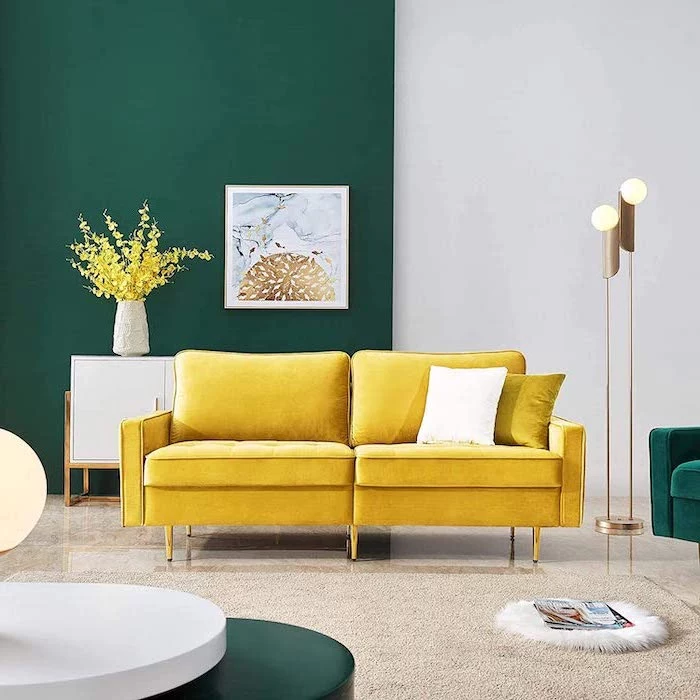
Think beyond the living room. The principles of clean lines, smart function, and natural materials translate beautifully to the kitchen. Consider flat-panel cabinet doors in walnut or a pop of color, simple barstool seating with tapered legs, and uncluttered quartz countertops. A globe or saucer pendant light above an island can instantly infuse the space with an MCM feel that is both timeless and practical.
Important point: Don’t confuse Mid-Century Modern with Atomic Age kitsch. While there’s some overlap, overdoing it with starburst clocks, kidney-shaped everything, and kitschy diner colors can turn a sophisticated room into a caricature. Use these playful elements sparingly, as a fun accent, rather than the foundation of your design. Let the elegant forms of the furniture do the talking.

